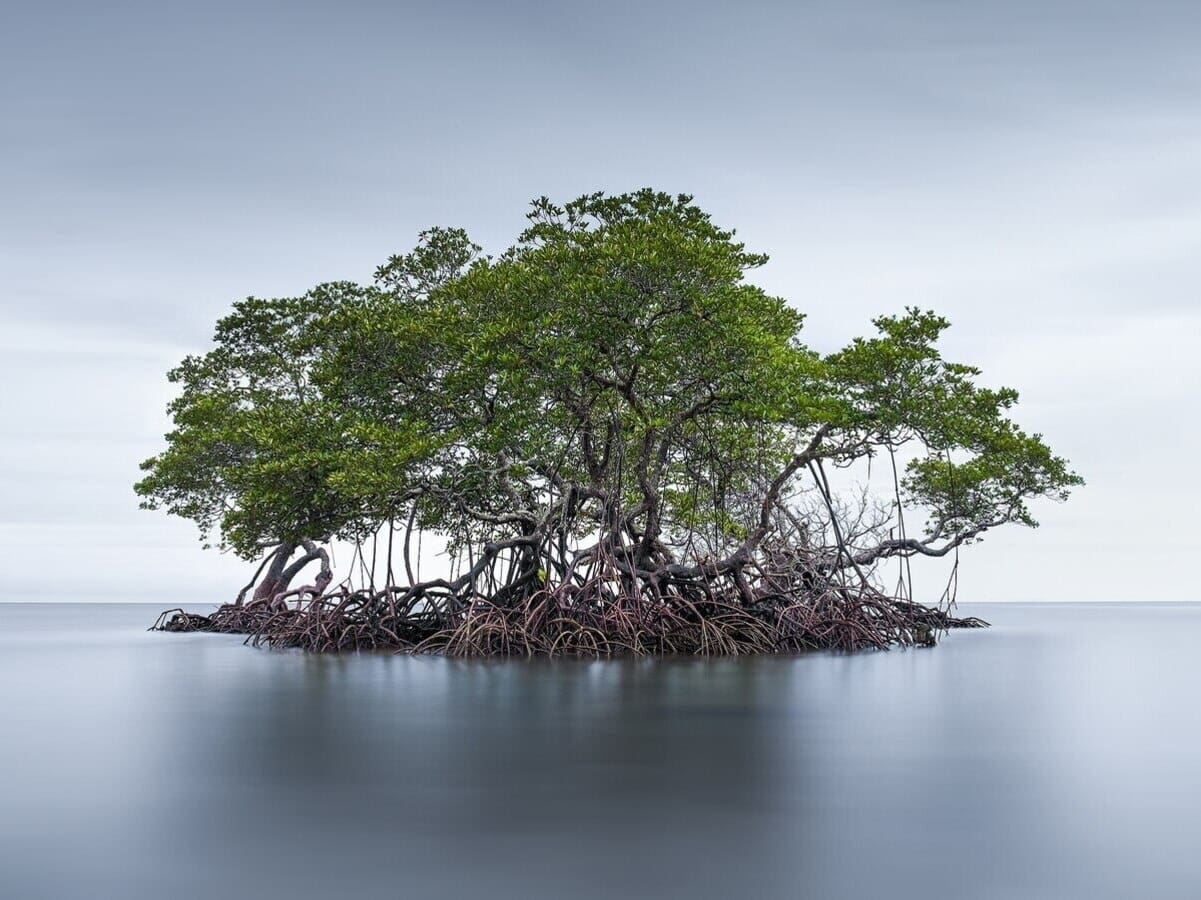A new study warns that half of the world’s mangrove ecosystems are at risk of collapse due to the climate crisis.
Mangroves
For the first time ever the International Union for Conservation of Nature (IUCN) – known for its red list of threatened species, has taken stock of the world’s mangroves.
Mangroves are groups of trees and shrubs that live in coastal intertidal zones. In total, there are around 80 species of mangrove. They grow at tropical or subtropical temperatures, close to the equator. Around 15% of the world’s coastlines are covered by mangroves, nearing 150,000 square km.
Due to tidal patterns, mangroves flood at least twice per day. Their dense tangle of roots slows the moment of tidal waters, meaning sediment settles and builds up. As a result, this makes them the perfect habitat for fish and other organisms trying to shelter from predators.
Crucially, mangrove forests also help stabilise coastlines, reduce erosion from storm surges, and currents. They are one of only a handful of trees that can tolerate salt water – meaning they are a vital part of the ecosystem.
On top of this, mangrove soils are extremely effective carbon sinks, meaning they lock away huge quantities of carbon and stop it from entering the atmosphere. They are able to store nearly three times more carbon than tropical forests of the same size – totalling 11bn tonnes.
Crucial habitats at risk
Vitally, the new report has for the first time assessed the health of the world’s mangroves in 36 different regions. Notably, it showed that 50% of them are at risk of collapse, with them either categorised as vulnerable, endangered or critically endangered.
Grethel Aguilar, IUCN director general said that the assessment:
highlights the urgent need for coordinated conservation of mangroves — crucial habitats for millions in vulnerable communities worldwide.
According to the assessment, 20% of these were at severe risk of collapse.
Many things threaten mangroves, including deforestation, development, pollution, and dam construction. However, this risk is growing because of rising sea-levels and the increased frequencies of severe storms. Ultimately, due to the climate crisis.
‘Disaster risk reduction’
Marco Valderrabano of IUCN’s told AFP that between 1996 and 2020:
A very good study of mangrove change globally that was published in 2022 indicates about 5,000 square kilometres of mangrove were lost.
The climate crisis is the biggest threat to mangrove ecosystems, with a third of them at risk due to rising sea levels.
If estimates are correct, in the next 50 years a quarter of all mangroves are expected to be underwater. The oceans most severely effected are predicted to be; northwest Atlantic Ocean, the northern Indian Ocean, the Red Sea, the South China Sea, and the Gulf of Aden.
Angela Andrade, chair of the IUCN commission on ecosystem management said:
Mangrove ecosystems are exceptional in their ability to provide essential services to people, including coastal disaster risk reduction, carbon storage and sequestration, and support for fisheries.
Their loss stands to be disastrous for nature and people across the globe.
Protecting mangroves
Without significant improvement by 2050, the climate crisis will lead to the loss of 1.8bn tonnes of carbon stored in mangroves.
Therefore, looking after mangroves is essential for mitigating the effects of the climate catastrophe. Healthy ecosystems cope better with sea level rises and provide inland protection from the effects of major storms.
Ensuring there is good sediment regulation and allowing mangroves to expand inland will allow them to cope with sea level rises. Importantly, the IUCN also called for the restoration of the mangroves which had already disappeared.
Additional reporting by Agence France-Presse
Feature image via Armusaofficial/Wikimedia, cropped and resized to 1200 by 900, licensed under CC BY-SA 3.0




